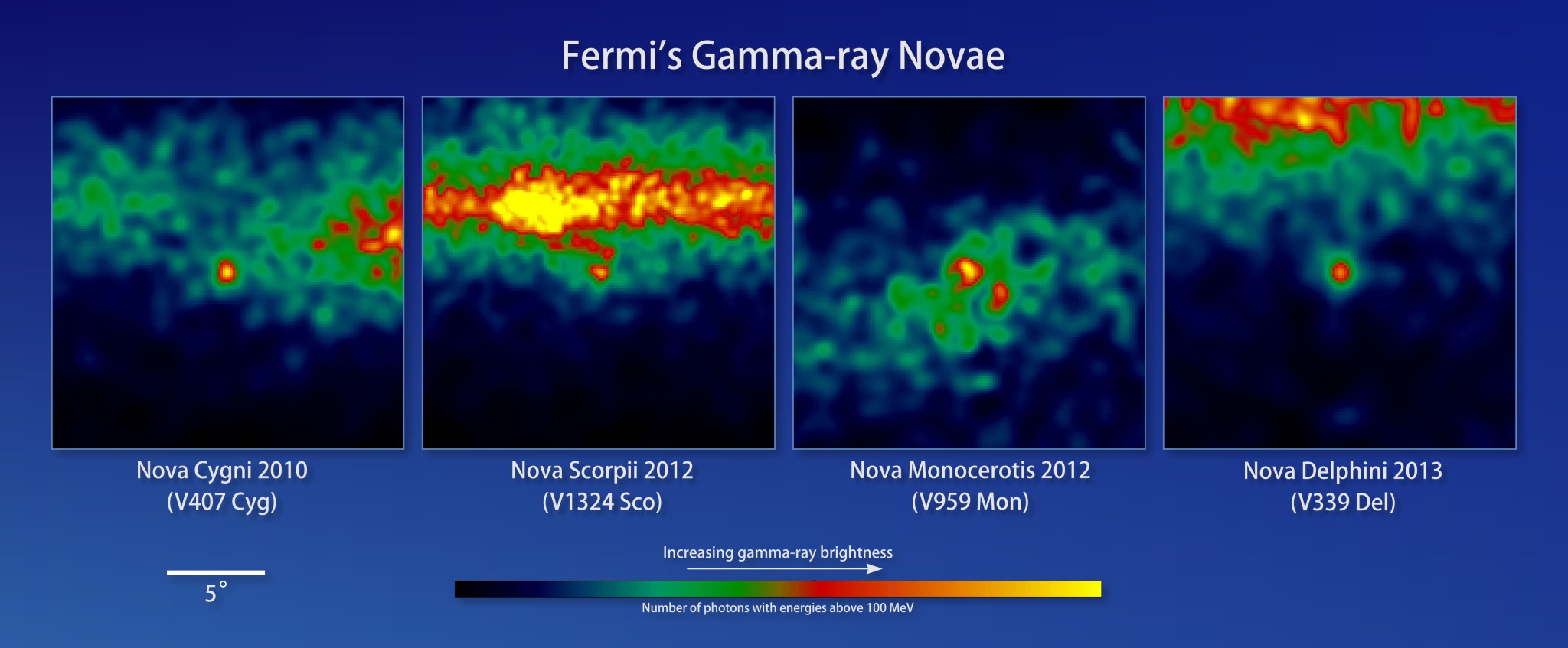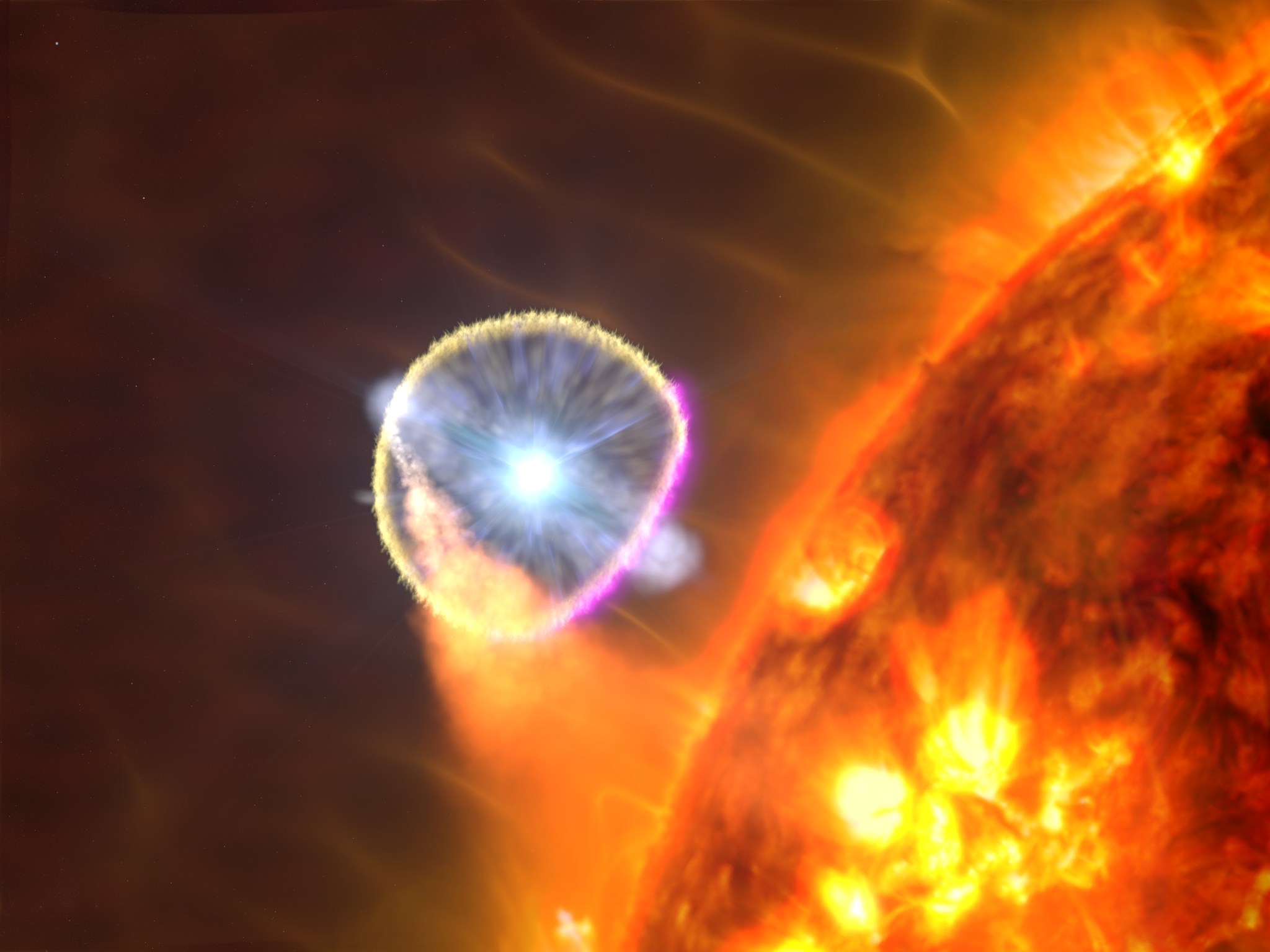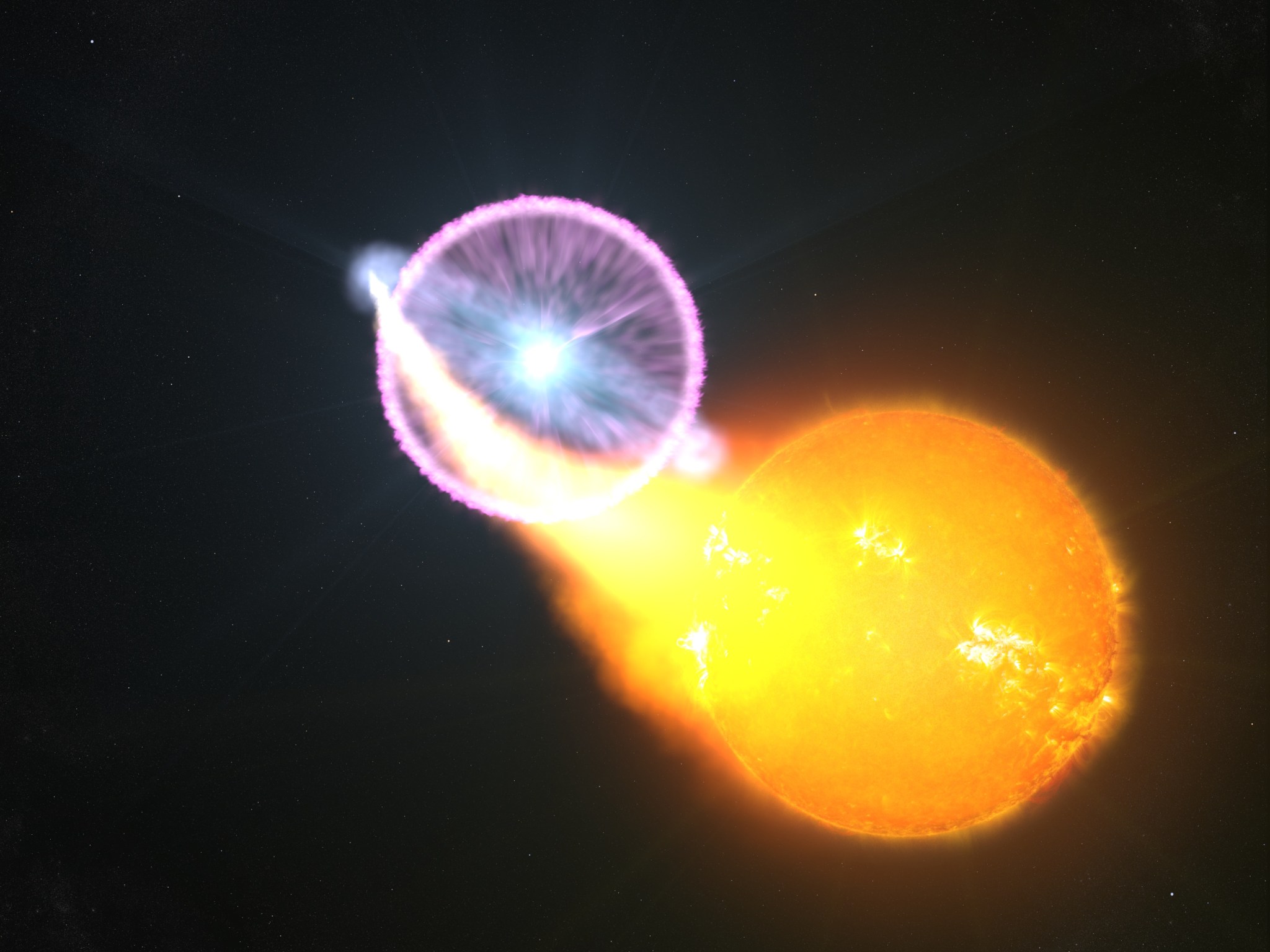
Observations by NASA’s Fermi Gamma-ray Space Telescope of several stellar eruptions, called novae, firmly establish these relatively common outbursts almost always produce gamma rays, the most energetic form of light.
“There’s a saying that one is a fluke, two is a coincidence, and three is a class, and we’re now at four novae and counting with Fermi,” said Teddy Cheung, an astrophysicist at the Naval Research Laboratory in Washington, and the lead author of a paper reporting the findings in the Aug. 1 edition of the journal Science.
A nova is a sudden, short-lived brightening of an otherwise inconspicuous star caused by a thermonuclear explosion on the surface of a white dwarf, a compact star not much larger than Earth. Each nova explosion releases up to 100,000 times the annual energy output of our sun. Prior to Fermi, no one suspected these outbursts were capable of producing high-energy gamma rays, emission with energy levels millions of times greater than visible light and usually associated with far more powerful cosmic blasts.
Fermi’s Large Area Telescope (LAT) scored its first nova detection, dubbed V407 Cygni, in March 2010. The outburst came from a rare type of star system in which a white dwarf interacts with a red giant, a star more than a hundred times the size of our sun. Other members of the same unusual class of stellar system have been observed “going nova” every few decades.

In 2012 and 2013, the LAT detected three so-called classical novae which occur in more common binaries where a white dwarf and a sun-like star orbit each other every few hours.
“We initially thought of V407 Cygni as a special case because the red giant’s atmosphere is essentially leaking into space, producing a gaseous environment that interacts with the explosion’s blast wave,” said co-author Steven Shore, a professor of astrophysics at the University of Pisa in Italy. “But this can’t explain more recent Fermi detections because none of those systems possess red giants.”
Fermi detected the classical novae V339 Delphini in August 2013 and V1324 Scorpii in June 2012, following their discovery in visible light. In addition, on June 22, 2012, the LAT discovered a transient gamma-ray source about 20 degrees from the sun. More than a month later, when the sun had moved farther away, astronomers looking in visible light discovered a fading nova from V959 Monocerotis at the same position.
Astronomers estimate that between 20 and 50 novae occur each year in our galaxy. Most go undetected, their visible light obscured by intervening dust and their gamma rays dimmed by distance. All of the gamma-ray novae found so far lie between 9,000 and 15,000 light-years away, relatively nearby given the size of our galaxy.

Novae occur because a stream of gas flowing from the companion star piles up into a layer on the white dwarf’s surface. Over time — tens of thousands of years, in the case of classical novae, and several decades for a system like V407 Cygni — this deepening layer reaches a flash point. Its hydrogen begins to undergo nuclear fusion, triggering a runaway reaction that detonates the accumulated gas. The white dwarf itself remains intact.
One explanation for the gamma-ray emission is that the blast creates multiple shock waves that expand into space at slightly different speeds. Faster shocks could interact with slower ones, accelerating particles to near the speed of light. These particles ultimately could produce gamma rays.
“This colliding-shock process must also have been at work in V407 Cygni, but there is no clear evidence for it,” said co-author Pierre Jean, a professor of astrophysics at the University of Toulouse in France. This is likely because gamma rays emitted through this process were overwhelmed by those produced as the shock wave interacted with the red giant and its surroundings, the scientists conclude.
NASA’s Fermi Gamma-ray Space Telescope is an astrophysics and particle physics partnership managed by the agency’s Goddard Space Flight Center in Greenbelt, Maryland. It was developed in collaboration with the U.S. Department of Energy, with contributions from academic institutions and partners in France, Germany, Italy, Japan, Sweden and the United States.
For more information about Fermi, visit:
https://www.nasa.gov/fermi
Related Links:
- Download related imagery from NASA Goddard’s Scientific Visualization Studio
- Paper: “Fermi Establishes Classical Novae as a Distinct Class of Gamma-Ray Sources”
- “Fermi Detects ‘Shocking’ Surprise from Supernova’s Little Cousin” (08.12.2010)
- Imagine the Universe! Cataclysmic Variables
-end-
J.D. Harrington
Headquarters, Washington
202-358-5241
j.d.harrington@nasa.gov
Lynn Chandler
Goddard Space Flight Center, Greenbelt, Md.
301-286-2806
lynn.chandler-1@nasa.gov

























